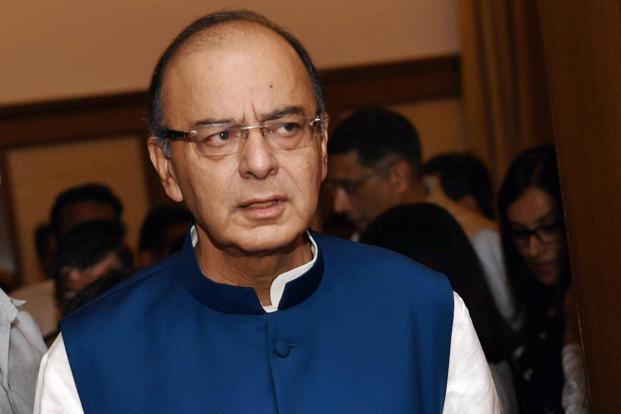GST: anti-profiteering measures necessary?
Live mint
By Pratik Jain
Sun, Jan 01 2017. 11 03 PM IST
Competition and an open market place is the best tool for keeping prices in check.

Finance minister Arun Jaitley. Photo: PTI
One of the key features of the revised draft model goods and services tax (GST) law (released in November 2016) is a provision enabling the Central government to constitute an authority to monitor the prices businesses charge for goods and services in the lead-up to, and following the introduction of, GST. If established, the authority will examine whether any reduction in a business’ cost base, or in the tax rate on goods and services as a result of the introduction of GST, is passed on to consumers in the form of appropriately reduced prices.
No mention is made as to who will undertake this task, how it will be undertaken, when it will commence, when it will end, and why it is necessary to add an additional compliance burden on Indian businesses already struggling to keep pace with the preparation for the introduction of a GST, even if it is delayed by three months or so to July 2017. Given that the model GST law has not yet been enacted, it is not likely that an authority will be constituted or appointed soon. With the GST due to commence next year, one must ask, “Why bother with anti-profiteering provisions at all?”
Overseas experience indicates that anti-profiteering provisions are only effective if there is a significant lead-in time to allow the relevant authority to educate consumers and businesses as to their respective rights and obligations. It is this education process that has the greatest impact on consumer confidence and business behaviour.
Once the tax commences, the prices set by businesses should be commensurate with the relevant market sensitivities, expectations and acceptance. If it is possible that an Indian business can set a market price without regard to consumer sentiment, the time to influence that market power is before the tax commences, not after. With such a short “lead-in” time before the GST commences, the authorities have little or no time to exert any such influence. To cite an Australian expression, once the GST has commenced, “the horse has bolted”. Australia was the first country to enact similar provisions when it replaced a series of inefficient taxes with a GST in July 2000. The Australian Competition and Consumer Commission (ACCC) was charged with the responsibility of monitoring prices 12 months before the commencement of GST. In August 1999, it was noted by the chairman of the ACCC that “any well-informed, competitive market operating in a climate of low inflation and good corporate citizenship will ensure that the vast majority of businesses will act fairly”.
Is it not a reasonable expectation that in a dynamic and competitive market such as India, market forces will ensure that any reduction in an Indian business’ cost base will flow through to lower prices?
Assuming the anti-profiteering provisions remain, the ACCC road map is instructive. Firstly, the ACCC’s focus was on educating consumers and businesses. This included the publication of pricing guidelines, communication strategies for different market segments and “hot lines” for consumers and businesses to get advice. Education was supported by extensive and sophisticated monitoring of prices leading up to the introduction of GST and in the months immediately following. The fall back was enforcement where there was blatant exploitation and profiteering (only 11 businesses were prosecuted in total).
Malaysia also introduced an anti-profiteering provision, along with the introduction of GST in April 2015. However, it led to widespread litigation and was found to be administratively difficult to implement.
There are several implementation challenges in enforcing such a provision. The government will need to come up with detailed guidelines on the mechanism for computation of benefit and administration. For example, whether the profit has to be computed at the product level or the entity level. Do we do this analysis for each of the costs or only the major costs? Also, what if businesses increase the prices before the implementation of GST, in anticipation of the benefit that would accrue?
From a business perspective, exploiting customers is not a viable business strategy. Being caught out exploiting customers is fatal. Ultimately, it is competition and an open marketplace that is the best tool for keeping prices in check. India has a competitive, open and growing market. Both Indian businesses and consumers are well placed to enjoy the benefits of GST, without government price monitoring.
From an administrative perspective, the short GST implementation time frame means that enforcement is likely to be the only viable approach to administering these provisions. Once the GST has commenced, businesses and advisers would have moved on, but not so the authorities responsible for administering the provisions. Litigation and damage to unfortunate and unsuspecting businesses will inevitably follow with little or no impact on prices.
India has made an important economic decision—to introduce a GST and repeal a number of inefficient taxes. Let’s hope the Central and state governments start focusing on making it easier for businesses to comply with the GST rather than imposing another compliance regime which adds nothing to the economy and detracts from the benefits of moving to a GST.